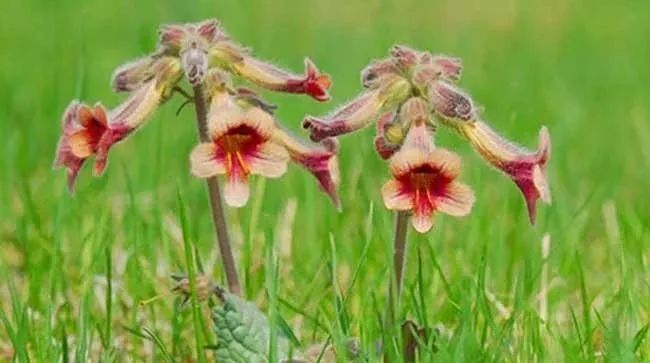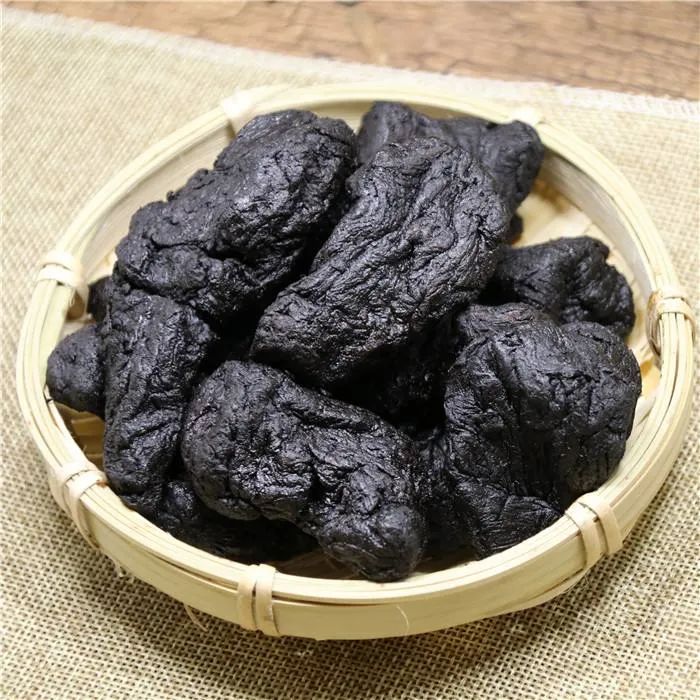


Shu Di Huang (Rehmannia Glutinosa) is a highly utilized herb in clinical practice, characterized by its sweet flavor and slightly warm nature. It is associated with the Liver and Kidney meridians and is known for its ability to nourish the Liver and Kidneys. It is commonly used to treat conditions such as Liver and Kidney Yin deficiency, tinnitus, blurred vision, weakness in the lower back and knees, night sweats, and irregular menstruation. Despite the extensive information provided, you may still find it hard to remember this herb, but there is a well-known Chinese patent medicine that many are familiar with—Liu Wei Di Huang Wan (Six Flavor Rehmannia Pill), where the “Di Huang” refers to Shu Di Huang, the protagonist of this article. Recently, my mother-in-law experienced tearing in her eyes and blurred vision, indicating a deficiency in the Liver and Kidneys. She took Ming Mu Di Huang Wan (Bright Eyes Rehmannia Pill), which is an enhanced version of Liu Wei Di Huang Wan, and the improvement was quite noticeable. However, what is most astonishing about this herb is not just its efficacy but the story behind its preparation process, which involves nine steams and nine sun-dryings, taking up to six months.

Huang Di Huang—Three Thousand Years to Brew a Medicine




Di Huang is a commonly used Chinese medicinal herb. Li Shizhen praised Di Huang by stating:“Taking it for a hundred days, the face will resemble a peach blossom, and one will remain youthful for three years.”Di Huangis primarily sourced from the regions of Wenshan, Mengzhou, and Qinyang in Henan Province (historically known as Huaiqing Prefecture), which is characterized by its loamy soil(black, hard, and coarse soil that does not stick) and is also the place where Huai Shan Yao (Chinese Yam) is grown. The ancients believed that Huaiqing Prefecture had the best soil, making it the center of medicinal herbs like Shan Yao and Di Huang, which thrive in rich soil. Therefore, during the Ming Dynasty, Zhang Jingyue stated:“Di Huang is produced in the fertile land of Zhongzhou, where the soil’s essence is the richest. Its color is yellow, the color of the earth. Its taste is sweet, the flavor of the earth.”As early as in the “Bencao Pinhui Jingyao,” it was discussed:“Di Huang from Huaiqing is the best.”

Nine Steams and Nine Sun-Dryings
Black as lacquer, bright as a mirror, sweet as honey




Shu Di Huang is a typical example of the different treatments of raw and cooked herbs: Sheng Di Huang (Raw Rehmannia) is cold in nature, clearing heat and cooling the blood; while Shu Di Huang (Cooked Rehmannia), after steaming, becomes slightly warm, shifting its effect from clearing to nourishing, capable of nourishing Yin, replenishing blood, and benefiting essence and marrow. The highest quality Shu Di Huang is said to be: black as lacquer, bright as a mirror, sweet as honey, but the steaming process is extremely meticulous and not something just anyone can master.
The cleaned Sheng Di Huang must be mixed with yellow wine; steaming is the key to the transformation of Di Huang. For the first 48 hours, the fire must not be stopped, and one must not leave the vicinity. There is also a secret step during the steaming process: the juice extracted from the herb is the essence of Di Huang and must be retained completely. The first batch of steamed Di Huang, when broken open, still shows a brownish-yellow core. To achieve a uniformly black and shiny appearance, it must first be dried outdoors; only dried Di Huang can fully absorb the medicinal juice before being steamed again, allowing the juice to penetrate the herb. This process must be repeated nine times, known as the Nine Steams and Nine Sun-Dryings.
The reason Shu Di Huang undergoes such a rigorous process is to utilize the heat of water and fire, along with the power of sunlight, to dissipate its cold and greasy nature, achieving a nourishing effect without stagnation. Therefore, properly processed Shu Di Huang is sweet as honey, melts in the mouth, and has the ability to nourish the Liver and Kidneys, replenishing essence and marrow, making it a powerful ally in TCM for treating diseases and promoting health.

Medication Contraindications



While Shu Di Huang is beneficial, it is not suitable for everyone. Due to its moistening and rich nature, individuals with Spleen deficiency, excessive phlegm, Yang deficiency, loose stools, or poor digestion are advised to use it under the guidance of a physician.
Reviewed by: Lou Zhengchi
Consultation Hotline: 3029564, 3029825
If you are interested in the explanations provided by the editor, feel free to scan the QR code below to follow our WeChat public account, where we will continuously update more TCM health knowledge to share with everyone!
Image sources are from the internet; if there is any infringement, please contact us for removal!


